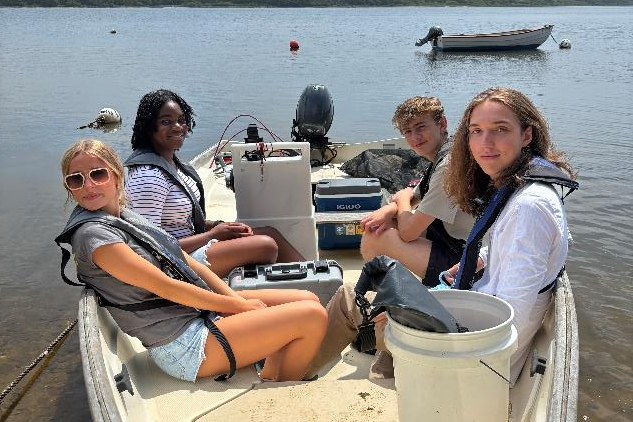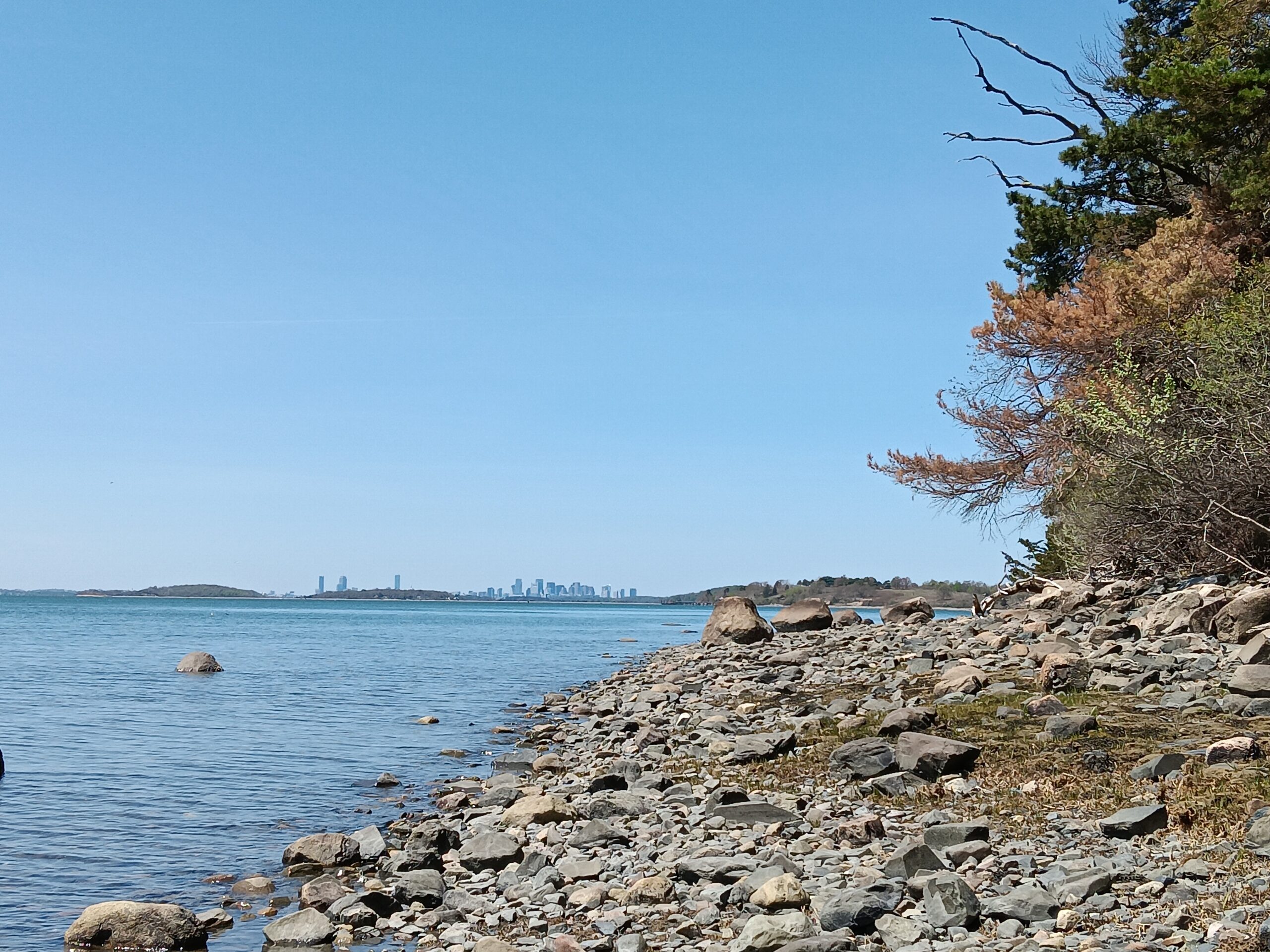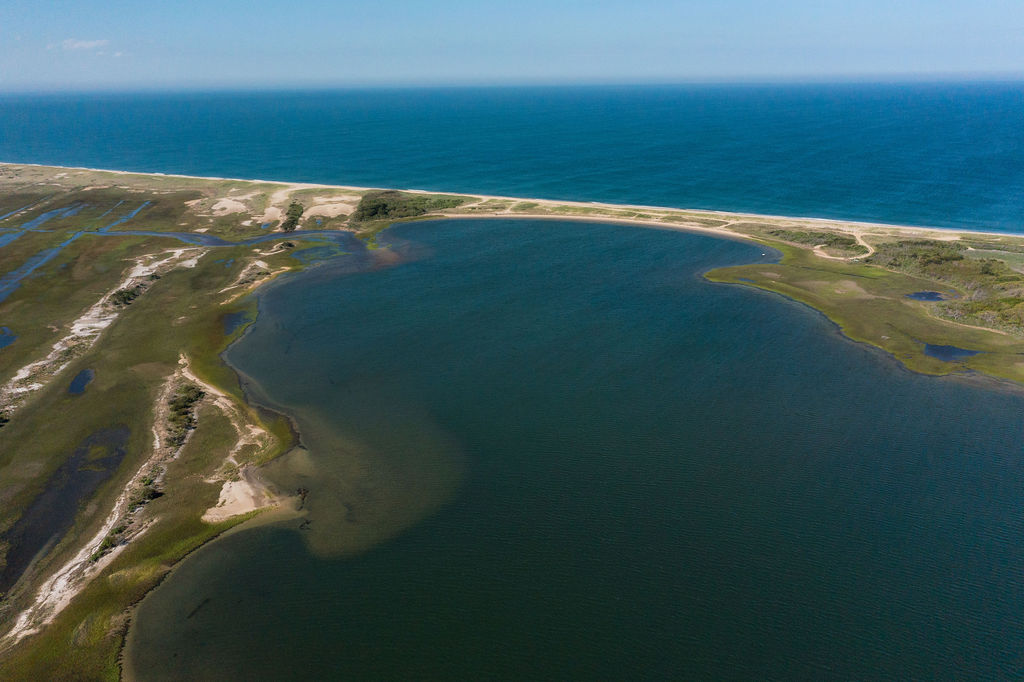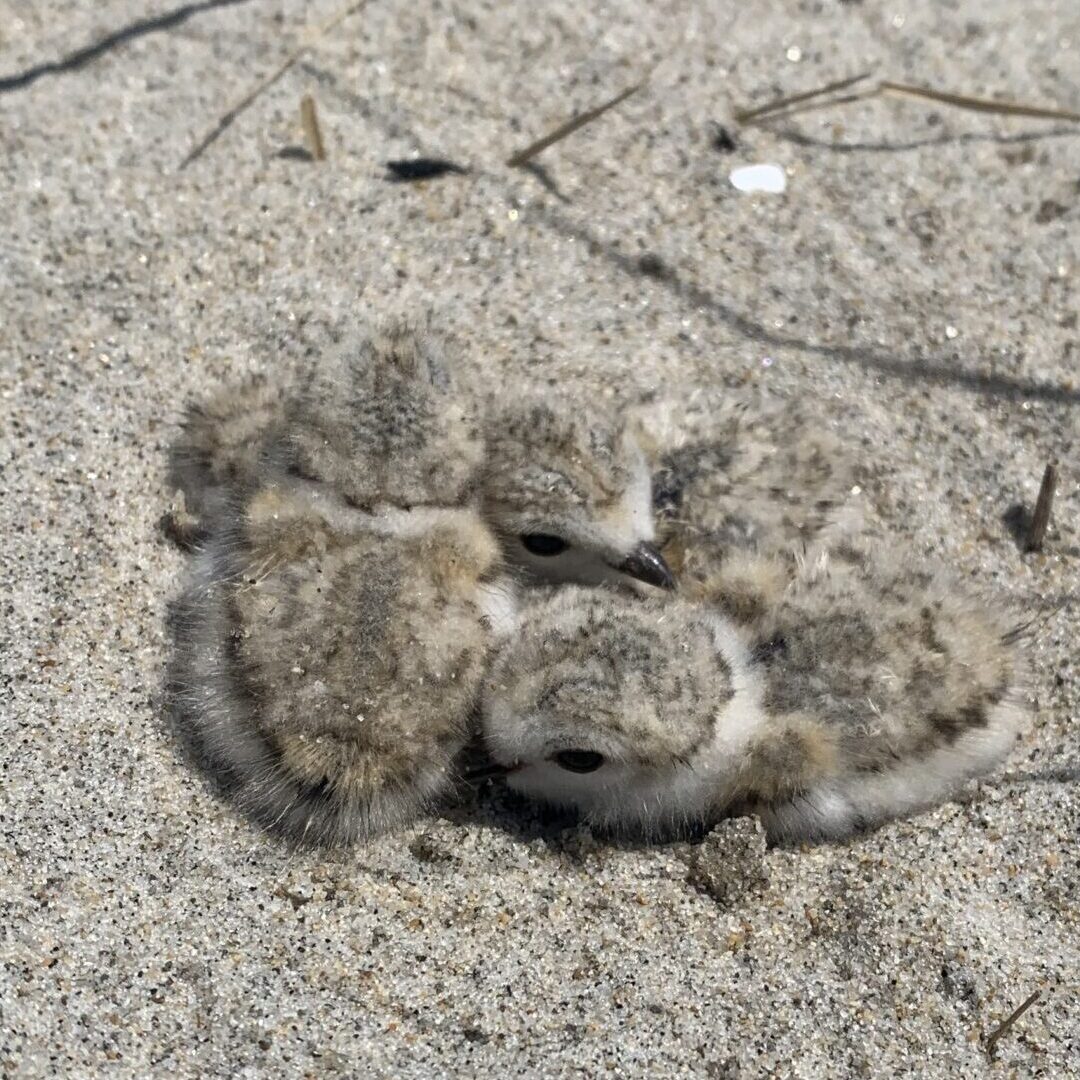
Newly hatched plover chicks at Crane Beach.
The 2024 summer shorebird season has drawn to a close as the last of plover, tern, and oystercatcher chicks have fledged for the season. Next week, September 22-29, 2024, marks Climate Week NYC in partnership with the United Nations, a week dedicated to providing a platform for current climate action, and conversations around how more can be done. The Trustees takes great pride in the work being done across our reservations to combat climate change and its effects.
At The Trustees, our mission and values contribute to a stewardship approach that includes prioritizing protection of vulnerable species and managing for healthy ecosystems. This ensures that our special coastal places are able to be enjoyed by future generations, both human and avian alike.
Why Protect Shorebirds?
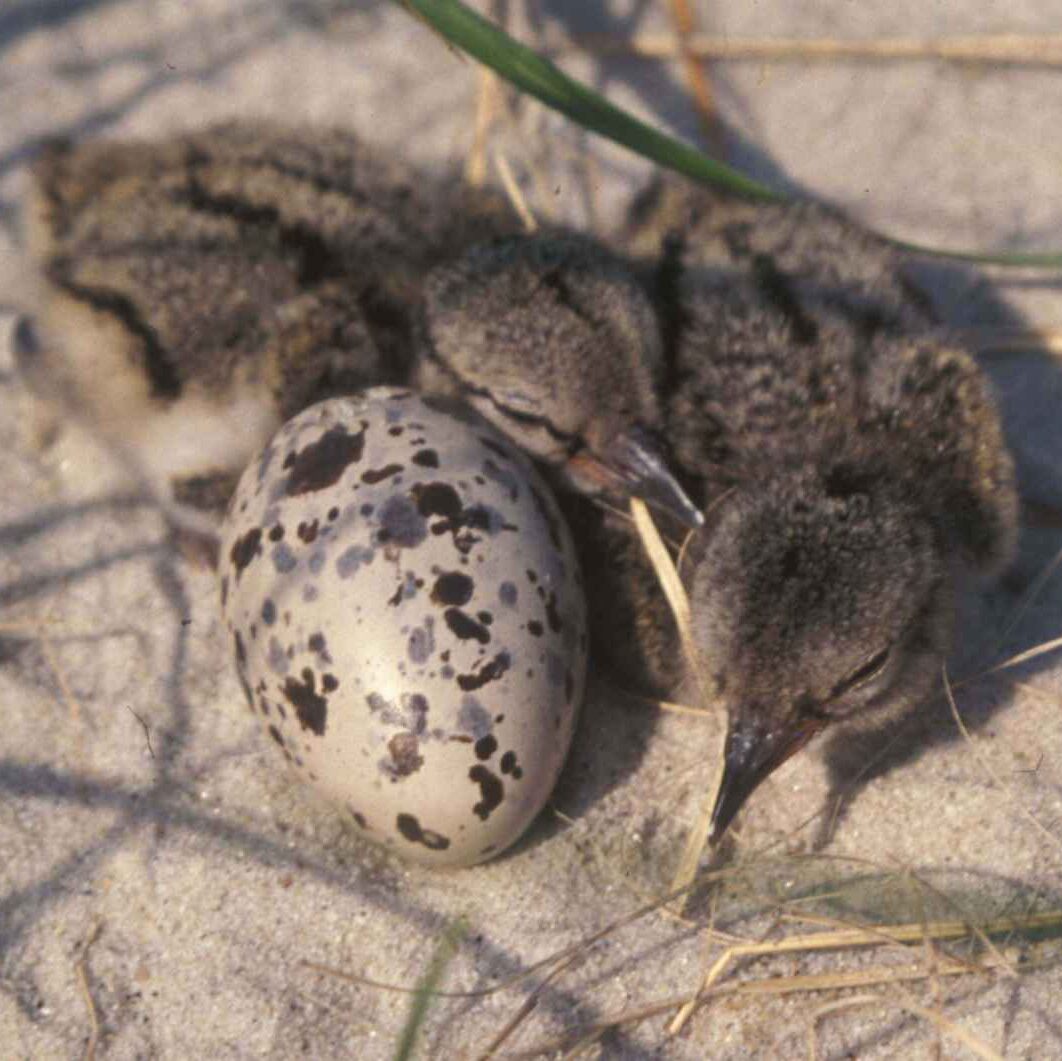
Oystercatcher chicks, Photo by Kacha Stephanie, USFWS
Shorebirds, overall, are a class of birds experiencing large-scale global population declines. According to the 2022 State of the Birds report from the North American Bird Conservation Initiative, North America has lost 33% of its shorebird population since 1970. There are multiple contributors to this widespread decrease, with recent threats including habitat loss from shoreline development, human disturbance, increased predator populations subsidized by human activity, and climate change.
Dramatic population declines have led to many species being listed under national and state endangered species acts in the United States. These acts regulate the protection of these species and their habitats and assist in their recovery. The Trustees protects some of the most significant shorebird habitat in Massachusetts, making proactive stewardship essential.
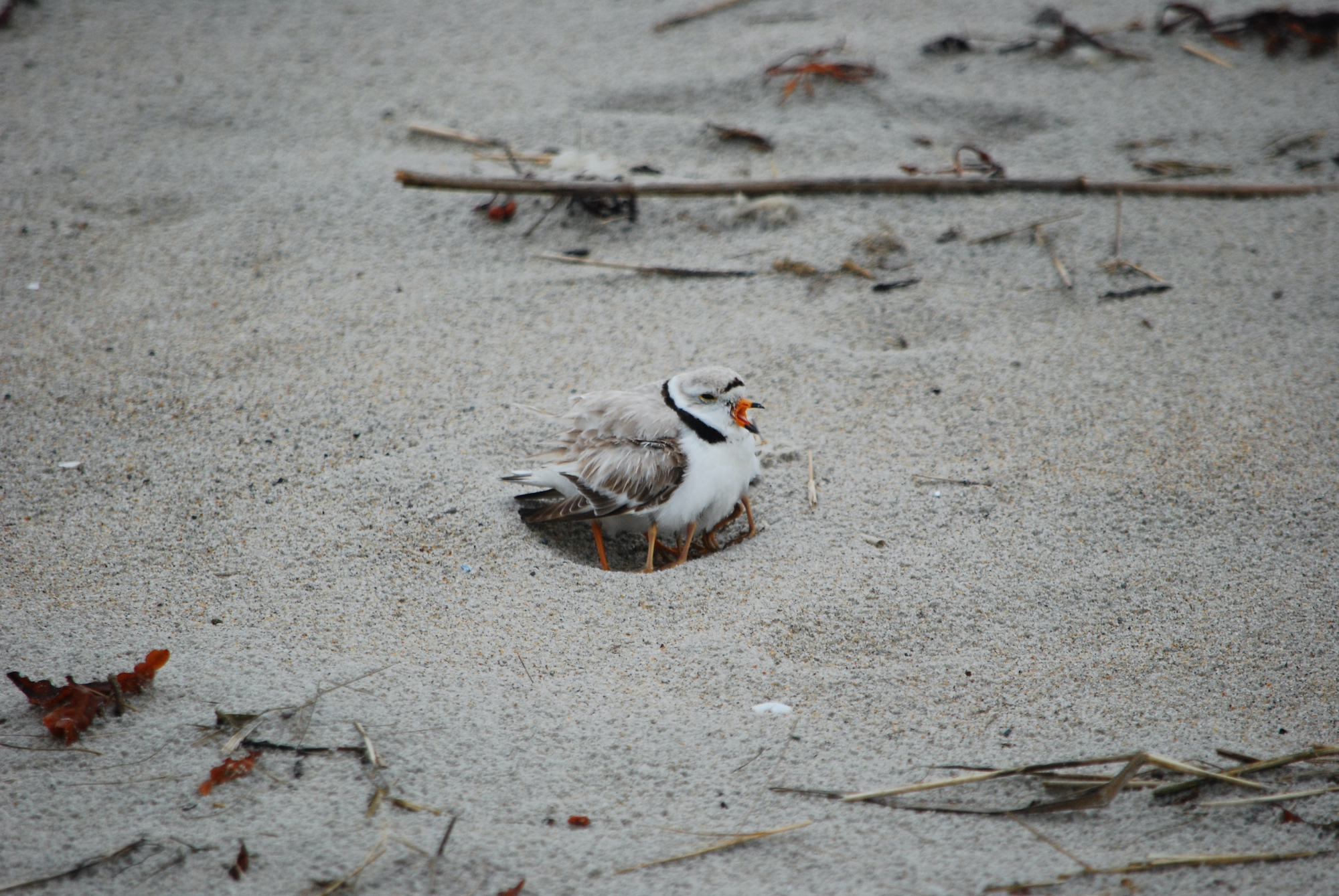
A tired parent plover brooding young chicks.
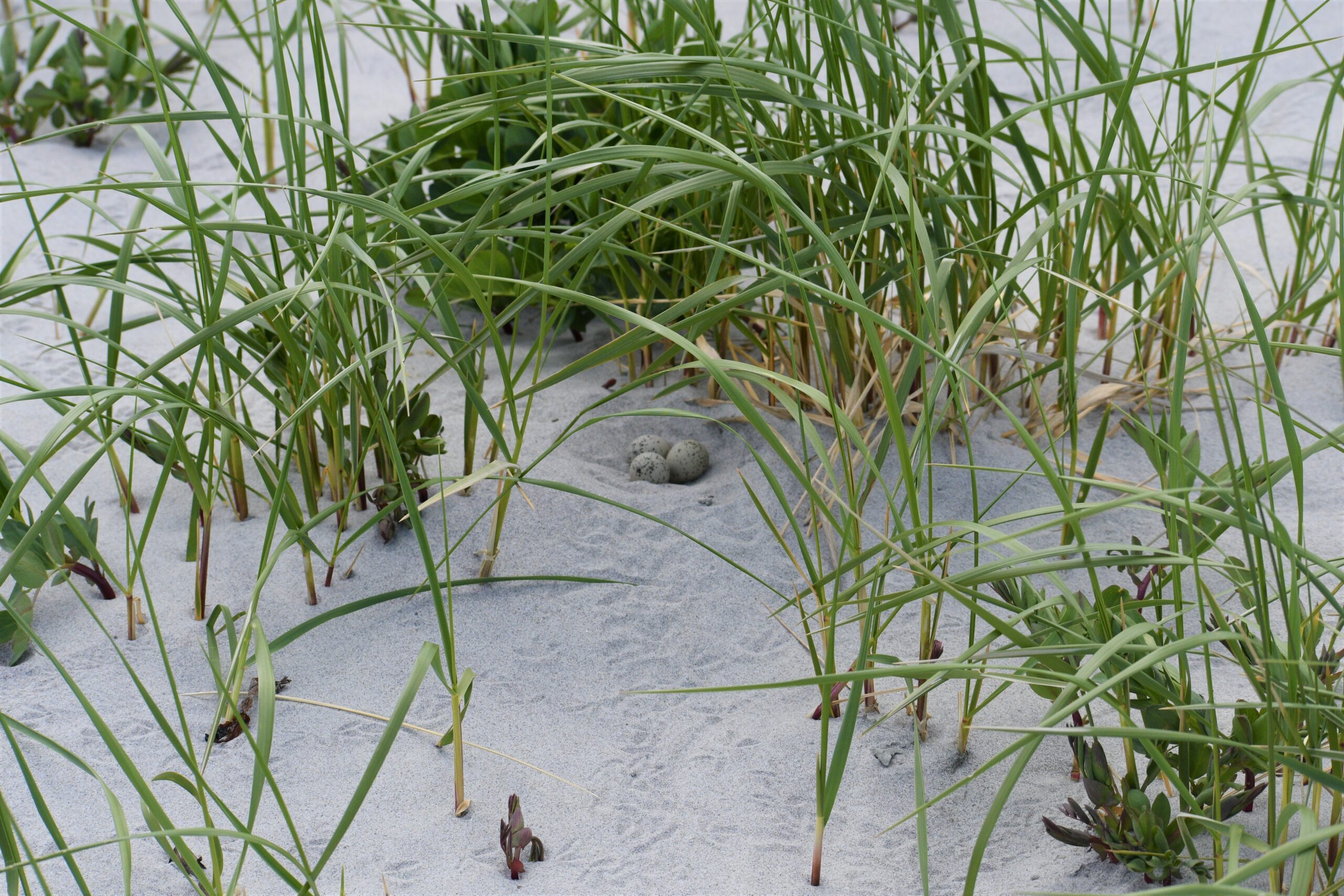
A Piping Plover nest.
Shorebirds at our Special Places
During the shorebird breeding season (April-August) the Trustees’ coastal ecology staff implement a shorebird protection program. This focuses on promoting the reproductive success of several species including the Piping Plover, Least Tern, Common Tern, and American Oystercatcher. The program’s goal is to balance recreation with the protection of wildlife and natural resources. The Trustees protects breeding habitat and nests with fencing and signs, conducts extensive monitoring, manages predators and enforces other regulations like access and seasonal pet restrictions.
While stewarding shorebirds is the focus of the program, protecting shorebirds and their habitats benefits the entire beach ecosystem. Barrier beaches, where many of these species are found, are a matrix of habitat types and provide critical ecosystem services to coastal communities.
Across the state, six Trustees properties support breeding shorebirds. These include Crane Beach on the Crane Estate in Ipswich, Wasque Reservation, Leland Beach, Cape Poge Wildlife Refuge, and Long Point Wildlife Refuge on Martha’s Vineyard, and Coskata-Coatue Wildlife Refuge on Nantucket.
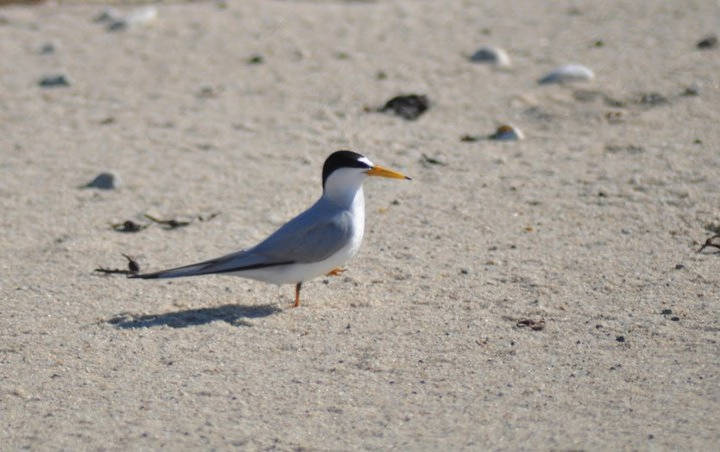
Least Tern, Amanda Boyd, USFWS
Season Stats
This season Martha’s Vineyard had a stellar year for Piping Plovers, producing 22 fledglings from 18 pairs. Unfortunately, Least Terns did not do as well, only fledging four to five chicks from 53 nests. Typically, nest predation is caused by animals like skunks and raccoons. Predator exclosures around plover nests greatly improved hatching success in 2024.
Crane Beach also fared well, with 45 pairs of Piping Plovers producing 54 fledged chicks. There were 289 nesting Least Tern pairs – the fifth highest number at Crane Beach since 1970. Oystercatchers also fared well, fledging eleven chicks from 14 pairs.
Nantucket’s Piping Plovers struggled this season despite having the second highest number of nesting pairs on record—the ten nesting pairs only fledged three chicks. Terns also struggled: the 65 Least Tern pairs fledged eight to ten chicks, and unfortunately, the single Common Tern nest failed to produce chicks. Thankfully, Oystercatchers met statewide productivity targets with 14 pairs fledging seven chicks. On Nantucket, chick loss remains the biggest obstacle to meeting target productivity numbers.
This year The Trustees protected an overall 73 pairs of Piping Plover, 407 pairs of Least Tern, two pairs of Common Tern, and 28 pairs of American Ostercatchers. Management efforts at Trustees properties have helped the Massachusetts plover population increase from about 135 pairs in 1986 nearly tenfold to 1,196 pairs in 2024. Together the Trustees protect more than 6% of the Massachusetts Piping Plover population and 8% of its Least Terns. Our island properties support more than 11% of the state’s population of American Oystercatchers with 25 or more pairs annually.
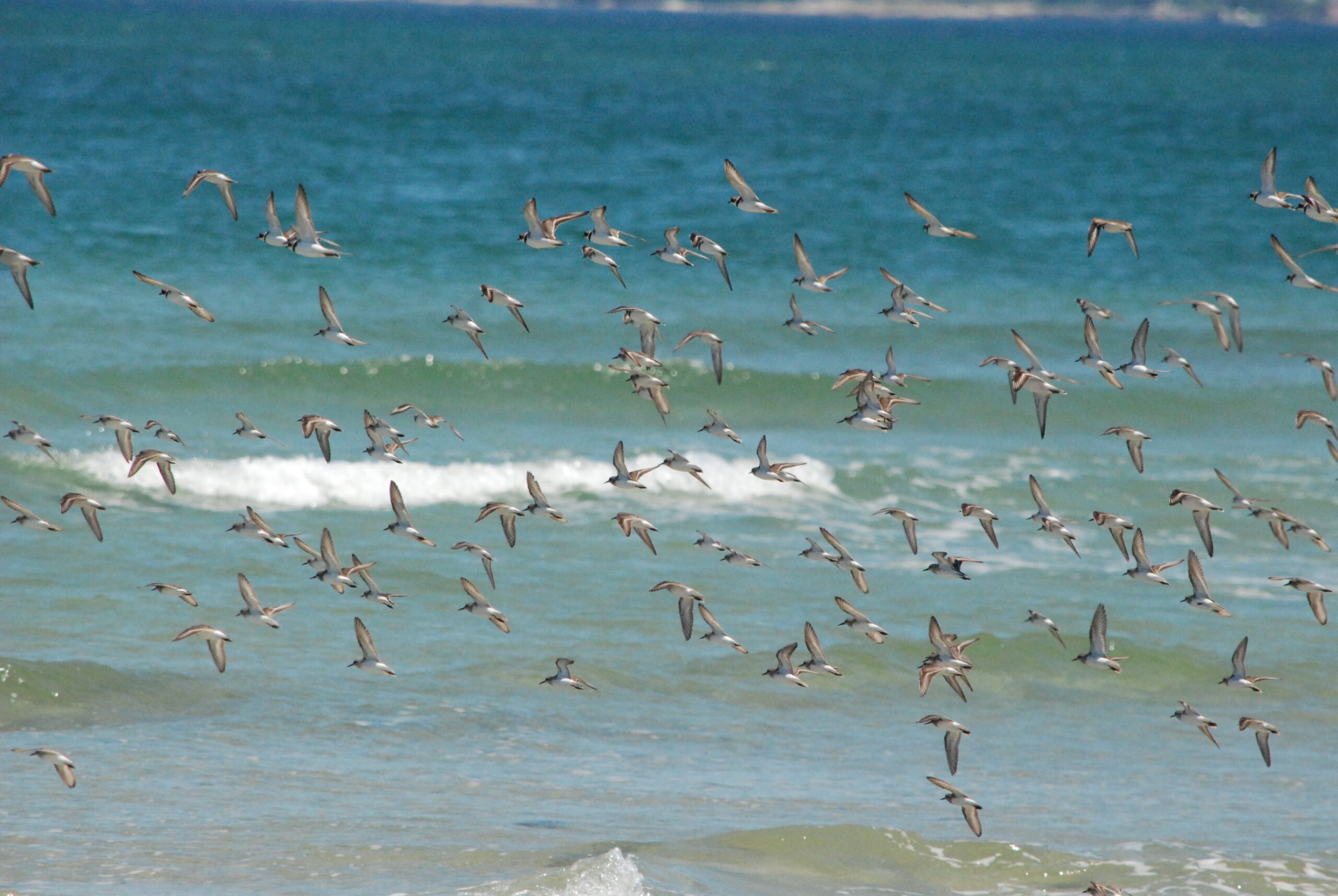
Migratory Shorebirds at Crane Beach.
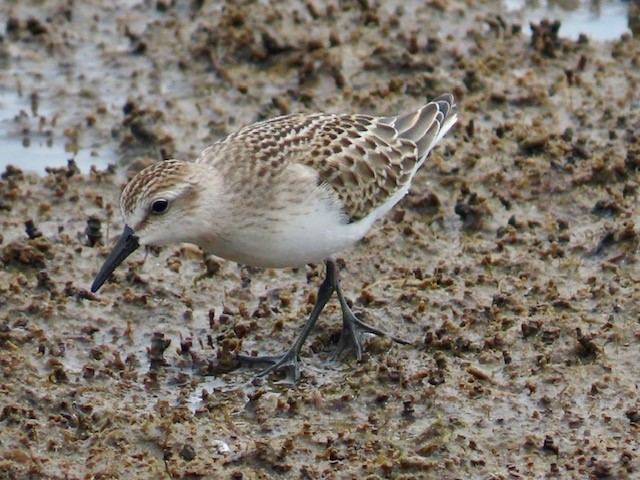
A Sandpiper on our Martha's Vineyard Beaches.
Supporting More Shorebirds
In addition to breeding species, Trustees’ coastal properties provide important habitat for migrating shorebirds—which include Sanderlings, Least Sandpipers, Ruddy Turnstones, Black-bellied Plovers, and Whimbrels, among others. Trustees’ beaches and coastal marshes provide a safe and food-rich place for migrants to rest and refuel along their grueling journeys. The Trustees adjusts fencing after the breeding season to extend protection to key gathering areas and conducts regular surveys that feed into global effort to track shorebird numbers.
To better understand how shorebirds utilize Trustees’ beaches after breeding, the organization conducts migratory shorebird surveys and participates in state-wide survey efforts like Manomet’s International Shorebird Survey Shorebird Blitz. Internal surveys recorded 16 different species of migratory shorebirds on our Martha’s Vineyard beaches and 15 on Coskata-Coatue Wildlife Refuge on Nantucket. For the Shorebird Blitz Martha’s Vineyard had the island high count for Ruddy Turnstone, Black-bellied Plover and American Oystercatcher, largely due to counts on Trustees property.
Protecting the birds we currently have improves the beach for future shorebird generations. We look forward to the arrival of our avian guests back to our beaches in 2025.
